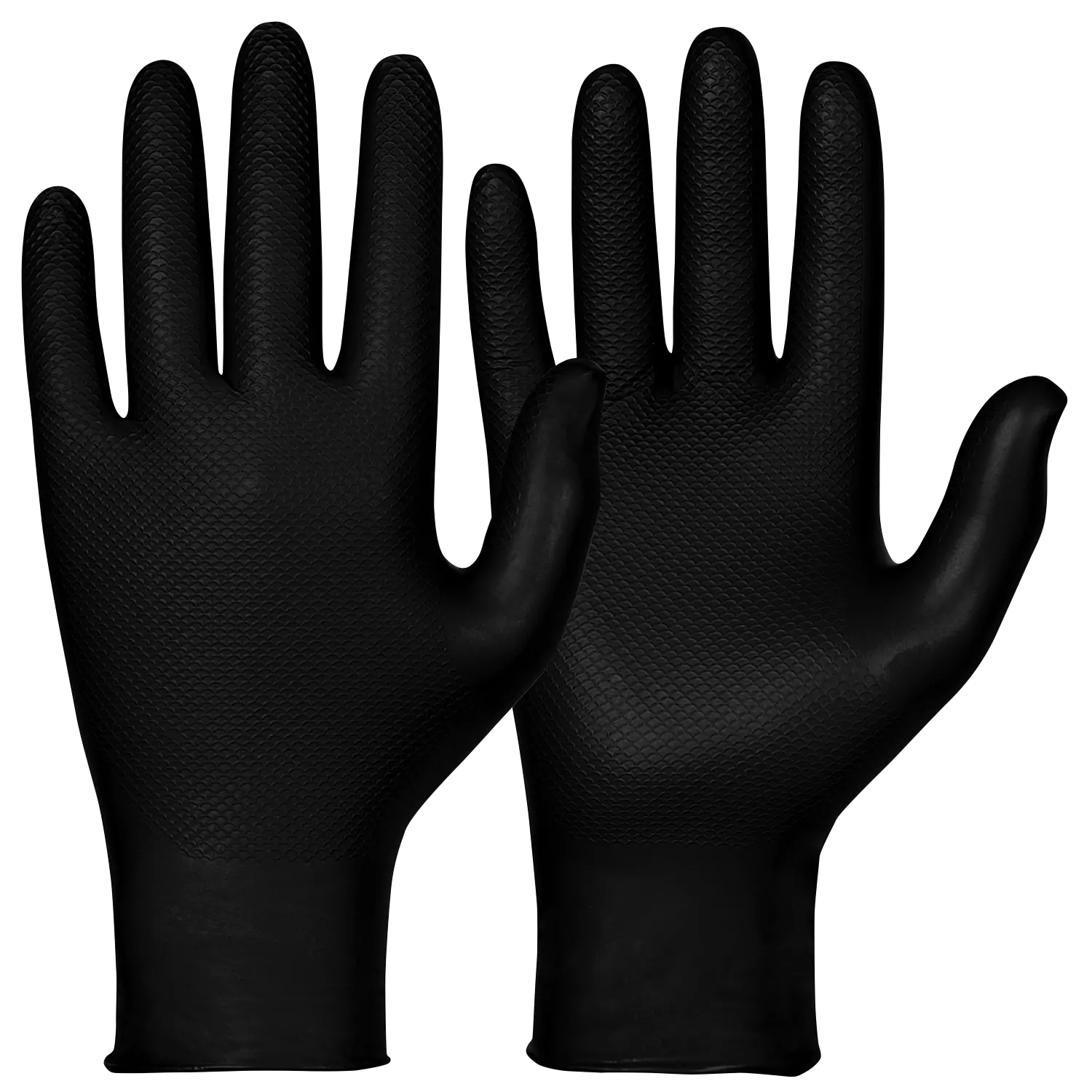

Product description
These premium nitrile protective gloves feature a patented fish scale print on both sides for superior grip in all conditions, including wet, oily, and dry environments. The ambidextrous design and tear-resistant beaded cuff provide enhanced protection against chemical spills while maintaining excellent dexterity and comfort. Certified to CE Category III standards, these gloves offer comprehensive chemical resistance and are ideal for precise handling in demanding industrial applications.
Product Features:
- Ambidextrous design
- Patented fish scale print for optimal grip
- Tear-resistant beaded cuff
- Powder-free construction
- Compatible with inner gloves for added comfort
Technical Details:
- Material: Nitrile
- Length: 24 cm
- Palm thickness: 0.15 ± 0.03 mm
- Weight: 7.4 ± 0.3 g
- AQL Level: 1.5
Protection Standards:
- CE Category III (Notified body 2777)
- EN ISO 21420:2020
- Chemical Protection:
—n-Heptane (J)
—40% Sodium Hydroxide (K)
—30% Hydrogen Peroxide (P)
—37% Formaldehyde (T)
Recommended Applications:
- Automotive industry
- Mechanical workshops
- Light assembly
- DIY shops
- Chemical industry
- Forensic work
About Disposable Nitrile Gloves
Disposable Nitrile Gloves provide latex-free hand protection with superior chemical and puncture resistance. These single-use gloves offer excellent tactile sensitivity and a secure fit, making them ideal for healthcare, food service, cleaning, and industrial applications where hygiene and safety are essential.
- Chemical Resistance
- Slip Resistant
- Hand Protection
Standards and labels
Granberg delivery terms
Free delivery for all Granberg products
Granberg
Single-Use Chemical Resistant Gloves, Black, 10 x 50 pcs
Single-Use Chemical Resistant Gloves, Black, 10 x 50 pcs
4.5 / 5
69,50 €
Price per 10 packages (500 pcs)
13,90 € / 100 pcs
Free delivery